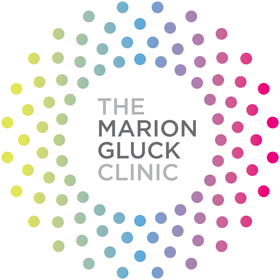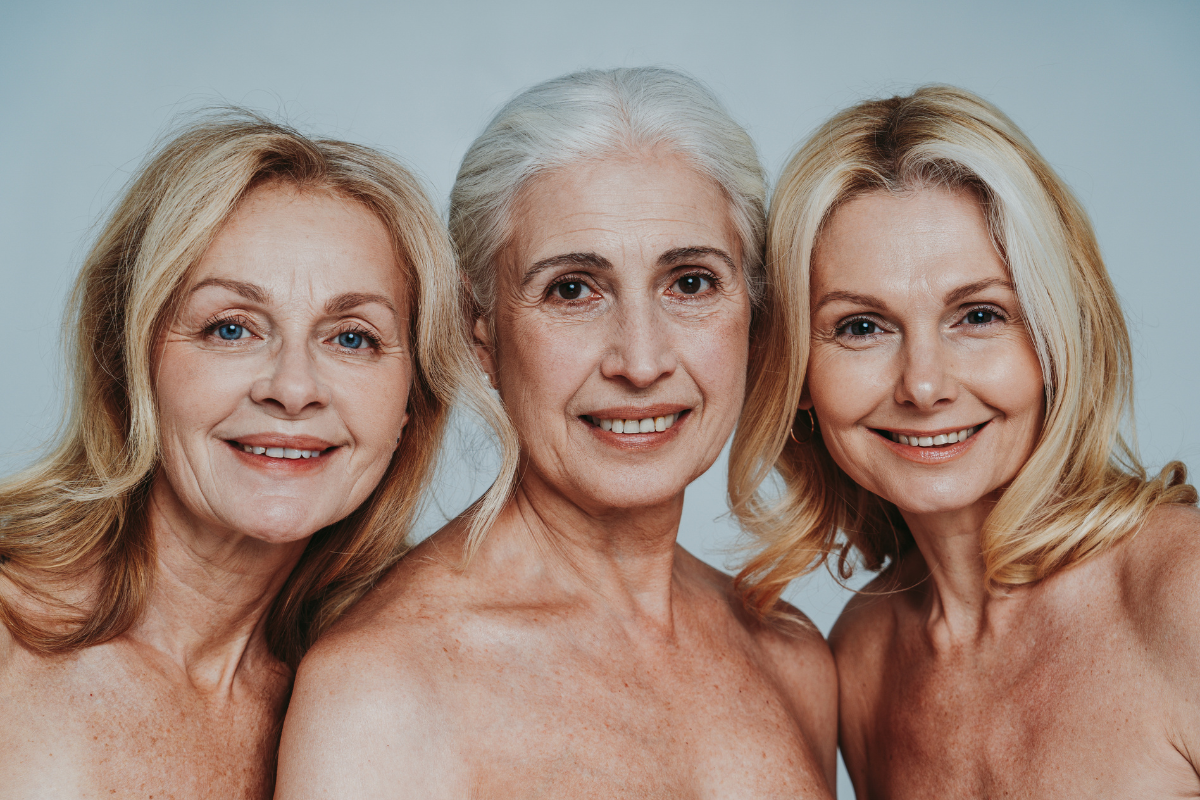
It certainly isn’t news that hormones are involved in skin and hair health. Therefore the physiological decline in hormones with aging (menopause in women and andropause in men) is a time of significant changes to the skin and hair for both sexes. Around age 45, women’s ovaries begin producing decreasing amounts of estrogen, progesterone and testosterone, while in men it is the testicles’ testosterone production that mainly drops.
Effect on the skin
The skin contains estrogen receptors, as well as receptors for progesterone and testosterone. Therefore deficiencies of these three hormones contribute to skin aging, in both men and women and results in the following symptoms:
- Thinner skin
- A increase in the number and depth of wrinkles
- Increased dryness
- Decreased firmness/elasticity
- Skin becomes more prone to sun damage, pimples and rashes, and can be easily irritated
- Facial hair – as levels of female hormones fall in women, unwanted hair can appear under the chin and along the jawline or above the lip
Effect on hair
During andropause and menopause hair growth can also be affected. In women, when the levels of estrogen and progesterone drop, hair grows more slowly and becomes much thinner. The thinning can occur on the front, sides, or top of the head. Hair may also fall out in large clumps during brushing and showering. In men, hair loss is a result of an imbalance of testosterone in the body. Instead of infusing the hair with healthy testosterone, enzymes break it down to a simpler form known as dihydrotestosterone (DHT). An excess of this hormone has the effect of decreasing the size of hair follicles which eventually break down and make the hair fall off sporadically.
Systemic vs local hormone therapy
Nowadays, there is a lot men and women can do to keep their skin and hair healthy. As we age, we all want not only to feel better, but also to look better and live better. Our wellbeing comes from the inside out. Systemic bio-identical hormone replacement treatment is definitely the first step to keep our body healthy but there is more we can do. In terms of skin & hair health, we also need to work locally. When we take bio-identical hormones systemically, our body distributes the hormones to all our organs and only a small, nominal amount actually gets delivered to the skin and to the hair.
Therefore, it is important that we integrate into our wellbeing journey two further steps: a medical grade home skin and hair care regime, containing various types of different molecules and hormones to apply locally and, eventually, regenerative and corrective procedures.
Playing the long game results in success
There are numerous medical procedures for menopausal and andropausal skin and hair changes. Treatment should be tailored to suit the person’s individual need. In addition, a skin and hair improvement plan is a journey, not a one-off event. We can compare starting a skin and hair improvement plan to joining the gym- we wouldn’t just go once and assume we will be fit for the rest of our life- we need to keep going.
Regenerative procedures:
In order to keep our skin and hair healthy, we need to build a strong foundation: regenerative procedures help the skin and hair help themselves. They improve overall skin and hair quality and slow down the ageing process on a cellular level. They make skin and hair cells act younger so that the skin and hair remains stronger, healthier and more beautiful overall – no matter what our age is. Regenerative procedures include: hyaluronic acid injections, skinboosters, Platlet Rich Plasma injections, microneedling, mesotherapy, calcium hydroxylapatite injections, chemical peels, etc.
Corrective procedures:
Nowadays it is possible to improve our appearance as we age, without any surgery, thanks to non-surgical corrective procedures. As previously discussed, bio-identical hormone replacement therapy works very well in maintaining our skin health but, as we age, we also lose bone and muscle tissues, ending up with lack of facial volume and contour. They can only be addressed through corrective procedures, we could never get our youthfully plump cheeks back with medical grade skincare or even regenerative treatments. Non-surgical corrective treatments include: wrinkle-relaxing injections, dermal fillers and fat melting. Some common indications for a corrective procedure are chin shaping, fat underneath the chin melting, lip volume, cheeks plumping, zygomas shaping, etc.
References
1. Utian WH. Skin: Impact of menopause, ageing and hormones. Menopause Management. 2009: May/June: 11-13.
2. Sator PG. Skin treatments and dermatological procedures to promote youthful skin. Clin Interv Aging. 2006; 1(1): 51-6.
3. Verdier-Sevrain S, Bonte F, Gilchrest B. Biology of estrogens in skin: implications for skin aging. Experimental Dertmatol. 2005; 15(2): 83-94.
4. Raine-Fenning NJ, Brincat MP, Muscat-Baron Y. Skin aging and menopause: implications for treatment. Am J Clin Dermatol. 2003; 4(6): 371-8.
5. Krahn-Bertel E, Dos Santos E, Damour E, et al. Expression of estrogen related receptor B (EERβ) in human skin. Eu J Dermatol. 2010; 20(6): 719-23.
6. National Health and Medical Research Council. Hormone Replacement Therapy: Exploring the Options for Women. 2005.
7. Verdier-Sevrain S. Effect of estrogens on skin aging and the potential role of selective estrogen receptor modulators. Climacteric. 2007; 10(4): 289-97.
8. W. S. Look great, not done, 2018.
9. Calvin M. Oestrogens and wound healing. Mauritas. 2000; 34(3): 195-210.
10. Mercurio MG (1998) Gender and dermatology. JGendSpecif Med1:16-20.
11. Ashcroft GS, Dodsworth J, Van Boxtel E, et al. Estrogen accelerates cutaneous wound healing associated with an increase in TGF-β1 levels. Nature Med. 1997; 3: 1209-15. [Abstract]



